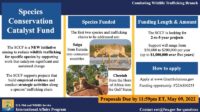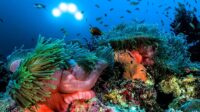Marine Turtle Conservation – For more than 100 million years, marine turtles have wandered the waters, contributing significantly to marine ecosystems. However, as a result of human activity, all seven species of sea turtles are currently vulnerable or endangered. Protecting these amazing animals and preserving the harmony of ocean ecosystems depend on marine turtle conservation. This article examines the reasons for the need for sea turtle conservation, the dangers that turtles face, and the steps being done to keep them safe.
Why Marine Turtle Conservation Matters
Ocean ecosystems benefit greatly from the presence of marine turtles. These kind organisms promote the existence of other marine species by assisting in the upkeep of coral reefs and seagrass meadows. Green turtles, for instance, feed on seagrasses, which maintains their health and encourages the development of seagrass meadows, which serve as habitat for fish and other marine species. Hawksbill turtles contribute to the equilibrium that permits coral reefs to flourish by feeding on sponges that pose a threat to coral reefs.
Important markers of the health of the ocean are also turtles. Their populations are vulnerable to environmental changes brought about by overfishing, pollution, and climate change. There is an urgent need for conservation measures since a drop in sea turtle numbers indicates more serious issues with marine ecosystems.
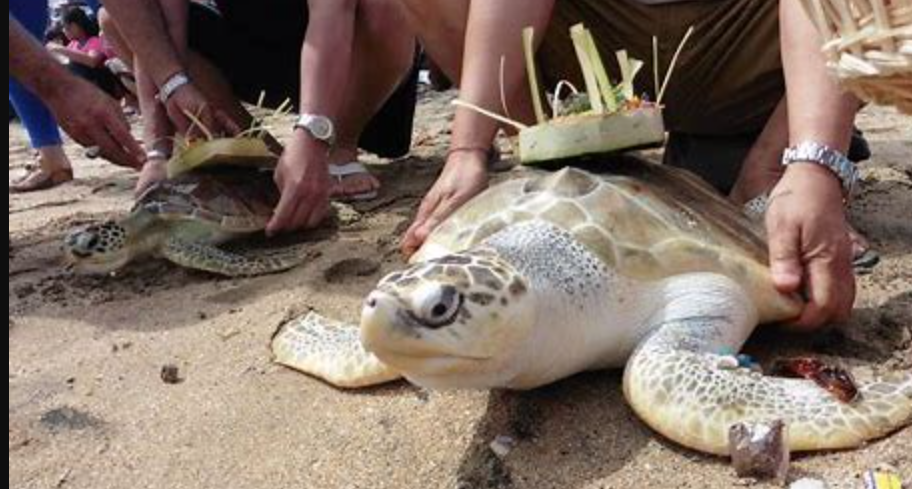
Marine turtles provide an important cultural and economic significance for many coastal communities, in addition to their ecological importance. Resilient sea turtle populations support local livelihoods in areas where sea turtle ecotourism is popular. Preserving biodiversity and promoting sustainable livelihoods are two goals of turtle protection.
Threats to Marine Turtles
Marine turtle populations have declined significantly as a result of many threats, despite the turtles’ significant value. The main causes of turtle death are poaching, habitat loss, plastic pollution, climate change, and bycatch—accidental capture in fishing gear.
Poaching is still a major concern, especially for turtle meat, eggs, and shells. Turtle eggs are esteemed as delicacies in some cultures, and turtle shells—particularly those of hawksbill turtles—are highly sought-after for use in jewelry and other decorations. Turtle populations have been severely damaged by this illicit trade in several areas.
Degradation of habitats is another serious issue. Important nesting habitats are frequently destroyed by coastal development for real estate and tourism. Hatchlings’ chances of survival are significantly decreased when they are unable to make their way to the ocean due to light pollution from coastal houses, which causes disorientation.
Marine turtles are unintentionally but fatally threatened by bycatch. Many turtles suffer injuries or even perish as a result of becoming inadvertently entangled in fishing gear, such as longlines, gillnets, and trawls. Although there have been attempts to use fishing gear that is favorable to turtles, bycatch is still an issue in many places.
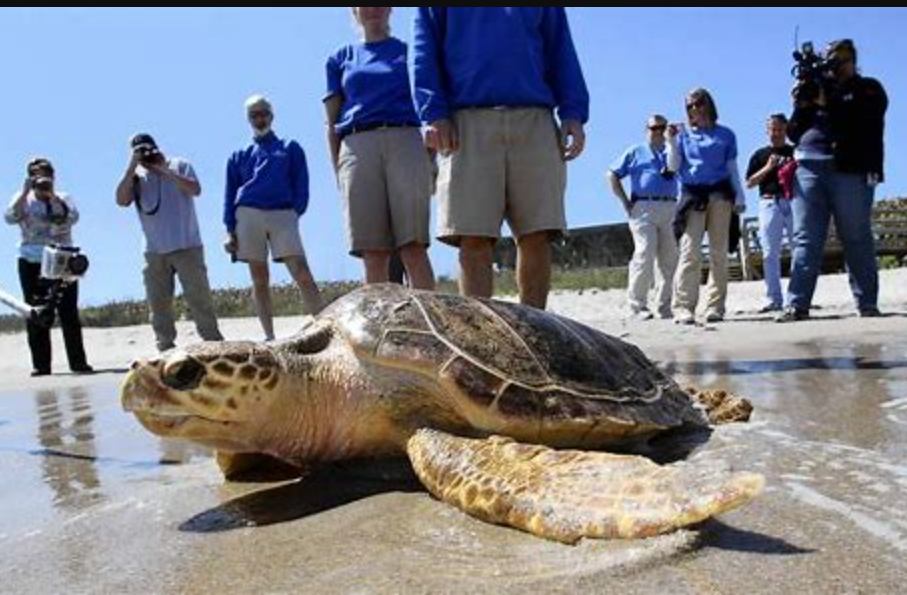
Marine turtles face a special threat from plastic contamination. Plastic bags are sometimes mistaken by turtles for jellyfish, which is one of their main food sources. This can result in ingestion and potentially deadly obstructions in their digestive tracts. Additionally, plastic waste can entangle turtles, limiting their range of motion and feeding capacity.
The protection of sea turtles is becoming even more complicated as a result of climate change. Nesting locations and the sex ratio of hatchlings are impacted by rising sea levels and rising temperatures. Warmer temperatures cause a disproportionate amount of female hatchlings, endangering the turtles’ ability to reproduce in the future since the temperature of the sand where the eggs are deposited determines the sex of the turtle.
The Importance of Protecting Turtle Nesting Sites
Preserving nesting grounds is one of the most important parts of sea turtle conservation. Often traveling thousands of kilometers, female turtles deposit their eggs on the beaches where they were hatched. Future generations’ survival depends on these nesting locations.
Sadly, human activity poses a threat to many of these locations. Reproduction success of turtles is being seriously hampered by human interference during nesting seasons, beach erosion, and coastal development. There is a significant risk to the species’ existence if breeding places are damaged or altered.
A variety of measures are taken to conserve these locations, such as creating protected areas, enforcing laws that forbid the destruction of nesting grounds, and teaching the local populace the value of keeping beaches unaltered during nesting seasons. In certain localities, volunteers man beaches to keep an eye on nesting activity and, if needed, move eggs to safer locations.
Conservation Programs and Success Stories
Notwithstanding the numerous obstacles that sea turtles face, conservation efforts have advanced significantly. Through a range of activities, several groups, governments, and local communities are collaborating to safeguard these endangered creatures.
The Kemps Ridley marine turtle’s rehabilitation in the Gulf of Mexico is one noteworthy success story. The number of nesting females in this species was in the low hundreds, and the species was almost extinct in the 1980s. The population has gradually grown as a result of tight preservation of nesting areas and international collaboration between the United States and Mexico. The species is making progress toward recovery, despite its status as endangered.
Through ecotourism programs, local people in Costa Rica have been extensively interested in the protection of turtles. These communities have discovered a method to save turtles while reaping financial rewards by converting turtle conservation into a source of revenue. Visitors pay to see turtles lay their eggs, and knowledgeable local guides make sure the animals are not harmed at this vital stage. This approach has shown to be effective not just in Costa Rica but also in other parts of the globe.
Turtle habitat protection has also benefited greatly from marine protected areas, or MPAs. These areas, which are frequently created by governments or international organizations, forbid damaging pursuits like construction and fishing and let turtles to move, breed, and feed in safety.
How Individuals Can Help
Individual efforts are crucial to the protection of sea turtles. There are easy things that anyone may do to support turtle protection in addition to large-scale conservation initiatives.
Participating in volunteer work with sea turtle conservation organizations is one of the best ways that people can make a difference. Numerous groups provide chances to participate in projects including nest monitoring, turtle tagging for scientific purposes, and beach cleanups to keep turtle-hazardous material out of the way. Volunteering promotes awareness of the value of conservation while also helping turtle numbers.
Cutting back on plastic use is another significant step. People may lessen the quantity of plastic debris that ends up in the ocean and thereby lessen the risk to sea turtles by utilizing reusable bottles, bags, and straws. Another option to lessen the quantity of plastic and other garbage that might endanger turtles and other marine creatures is to take part in beach cleanups.
Teaching others is also essential. Through raising awareness of the dangers sea turtles face and the value of conservation, individuals may contribute to the development of a larger movement aimed at preserving this threatened animals.
Addressing Climate Change and Its Impact on Marine Turtles
Because it alters both the sex ratio of hatchlings and their nesting grounds, climate change presents a serious long-term danger to sea turtle populations. The sex of sea turtle hatchlings is determined by the sand’s temperature, as was previously reported. More females are produced by warmer sand, more males by colder sand. The equilibrium between male and female turtles is changing due to rising global temperatures, which might have a negative effect on future populations.
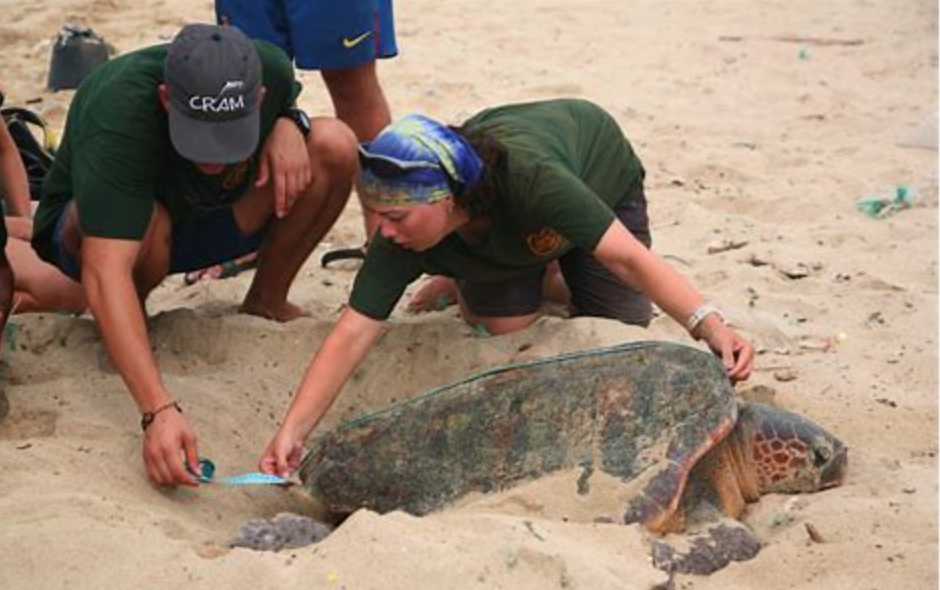
To lessen the effects of climate change on sea turtles, conservationists are investigating a number of different approaches. To preserve a balanced sex ratio and keep the sand colder, one strategy is to shade nesting areas. Another tactic being attempted in certain areas is moving nests to more favorable locations.
The Role of Local Communities in Turtle Conservation
Local communities are essential to the conservation of sea turtles. Community-led conservation programs have shown to be among the most successful ways to safeguard turtles in many different places. These initiatives foster a sense of ownership and responsibility among the local population by including them in conservation activities, which in turn encourages sustainable habits.
Local volunteers and guides try to keep poaching and habitat devastation at bay for breeding turtles in areas like Tortuguero, Costa Rica. Through ecotourism, this strategy not only aids turtles but also creates jobs for the local population.
Conclusion
Preserving biodiversity and the health of ocean ecosystems depend on the conservation of marine turtles. Despite the many problems these ancient animals face, such as poaching and climate change, the combined efforts of individuals, groups, and governments are beginning to make a difference. We can guarantee that future generations will have the chance to appreciate the significance and beauty of marine turtles by keeping up the protection of nesting areas, lowering plastic pollution, and involving local people.
- Marine Turtle Conservation: Protecting Endangered Turtles 2024 - September 8, 2024
- Dog Care Advice For Busy Families - August 24, 2024
- Wildlife Conservation Funding - August 23, 2024

